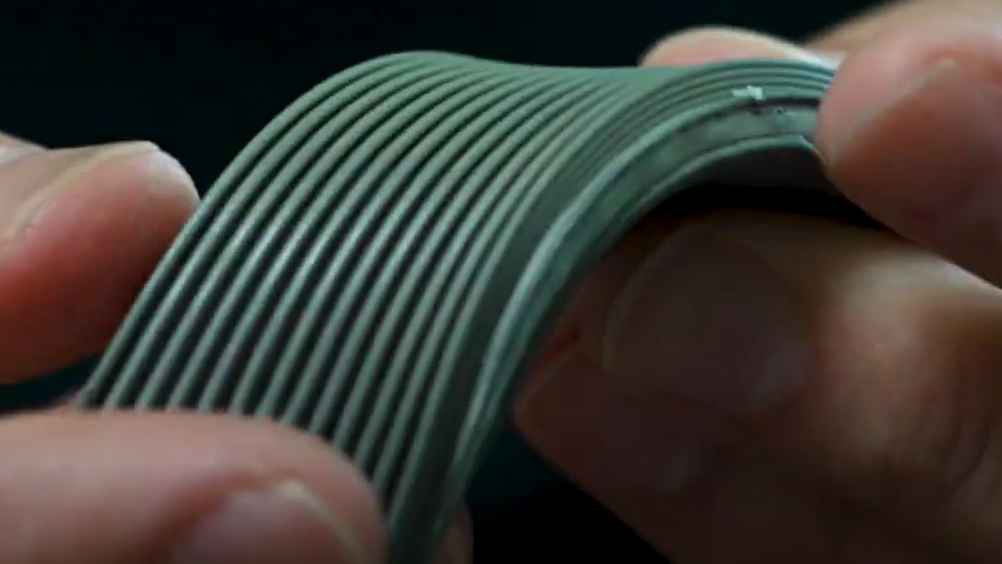Super stretchy wearable converts body heat to electricity
Engineers at the University of Washington have developed a stretchable, wearable device that can harvest heat from the body to power sensors and LEDs.

Described in Advanced Materials, the prototype device consists of rigid thermoelectric semiconductors connected with printed liquid metal traces. Liquid metal droplets are embedded in the outer layers to improve heat transfer to the semiconductors and maintain flexibility. The semiconductors are surrounded by 3D-printed composites with low thermal conductivity, enhancing energy conversion and reducing weight.
To demonstrate the device in action, senior author Mohammad Malakooti, UW assistant professor of mechanical engineering, attached the prototype to his arm where it powered a small LED light.
"I had this vision a long time ago," said, Malakooti. "When you put this device on your skin, it uses your body heat to directly power an LED. As soon as you put the device on, the LED lights up. This wasn't possible before."
According to the researchers, the prototype was built form scratch, starting with simulations to determine the best combination of materials. All components, apart from the semiconductors, were then created in the lab. Due to the thermoelectric profile of the device, Malakooti said it could also be used to harvest waste heat in data centres.
Register now to continue reading
Thanks for visiting The Engineer. You’ve now reached your monthly limit of news stories. Register for free to unlock unlimited access to all of our news coverage, as well as premium content including opinion, in-depth features and special reports.
Benefits of registering
-
In-depth insights and coverage of key emerging trends
-
Unrestricted access to special reports throughout the year
-
Daily technology news delivered straight to your inbox










Water Sector Talent Exodus Could Cripple The Sector
Maybe if things are essential for the running of a country and we want to pay a fair price we should be running these utilities on a not for profit...